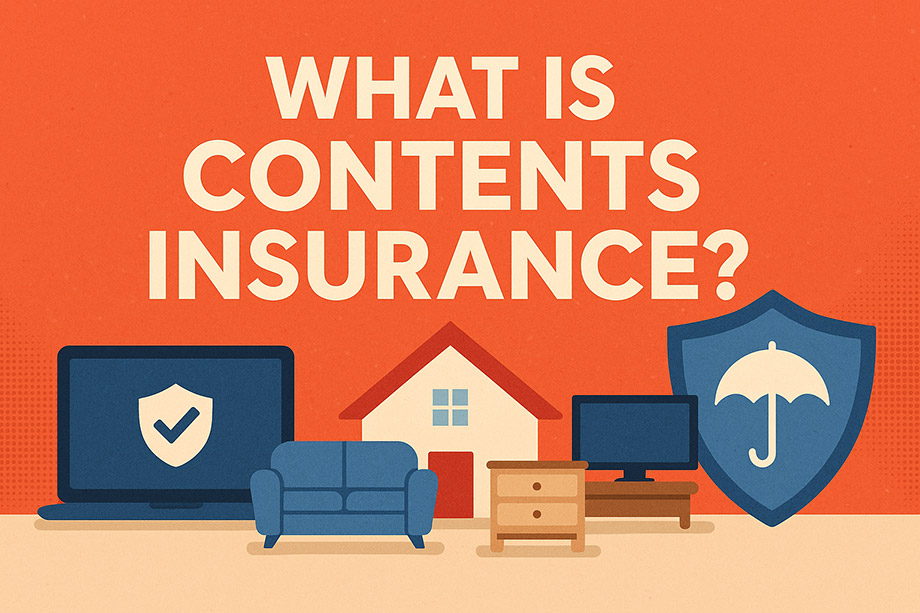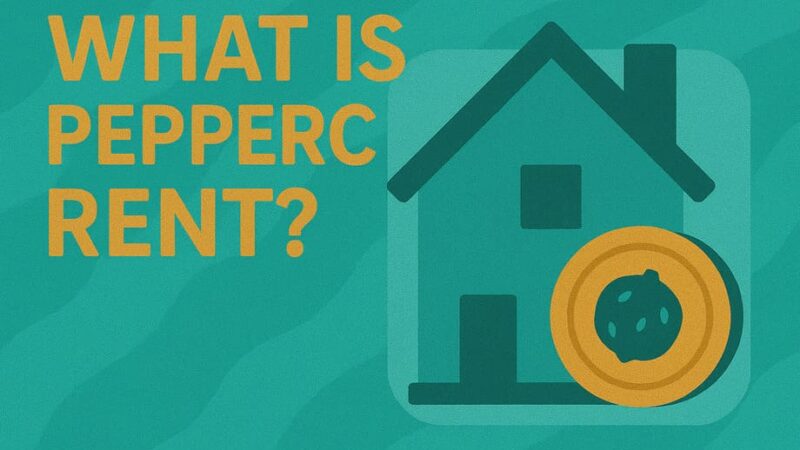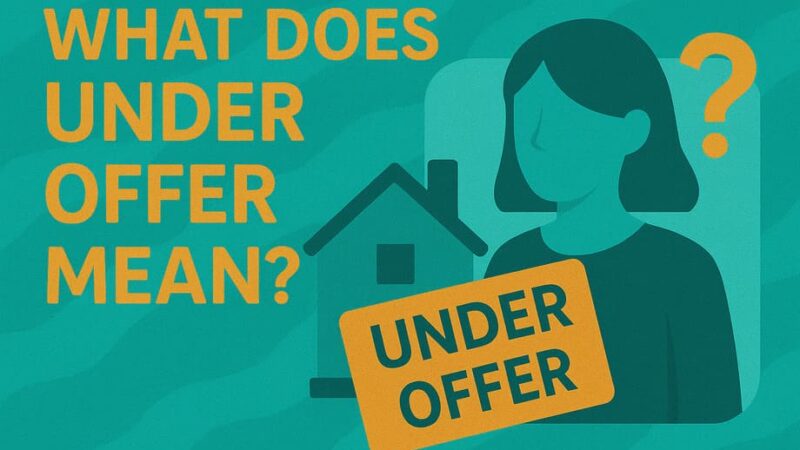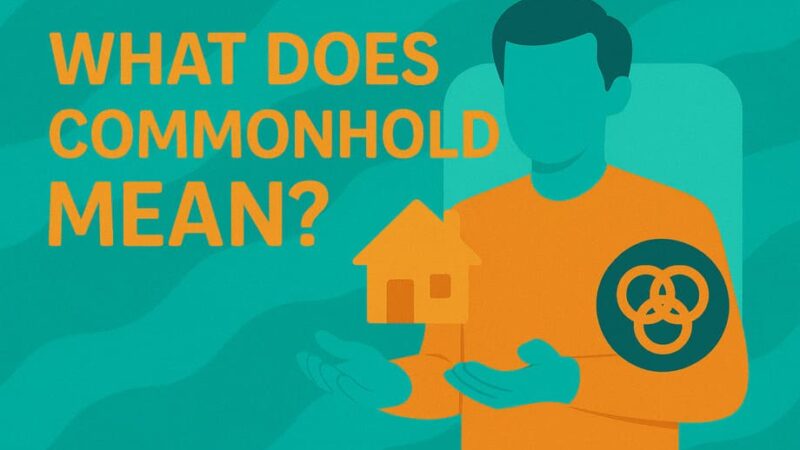What is Contents Insurance?

Contents insurance covers loss or damage to things inside your home, costing an average of £129 per year. If you tip your home upside down, contents insurance typically covers everything that falls out, including fitted carpets. It’s optional but highly recommended since replacing all your belongings could cost thousands.
Whether you’re a homeowner, renter, or student, understanding contents insurance is crucial for protecting your possessions. This comprehensive guide will explain what contents insurance covers, how much it costs, and whether you need it.
What is Contents Insurance?
Contents insurance covers the cost of replacing belongings in your home if they’re damaged, destroyed or stolen. It includes everything you would take with you if you moved home including your furniture, kitchen appliances, curtains, bedding, clothing, television, computing equipment and jewellery.
Think of it this way: if you tip your home upside down, contents insurance typically covers everything that falls out, including fitted carpets.
How Contents Insurance Works
When something covered by your policy is damaged, destroyed, or stolen, you make a claim to your insurance company. They’ll check if your situation is covered and work out how much money they’ll give you to help fix or replace any damage caused.
Key Features:
- Replacement Cost: Your contents should be insured for the cost of replacing them as new, not their current value
- Excess: You’ll typically need to pay a bit of the claim yourself – usually between £50 and £100
- Coverage Limits: There are maximum amounts the insurer will pay out for different types of items
What Does Contents Insurance Cover?
Standard Coverage
Most contents insurance policies cover the cost of replacing or repairing your possessions that are damaged or destroyed as a result of these events:
Common Covered Events:
- Fire and lightning
- Theft and burglary (with signs of forced entry)
- Storm and flood damage
- Escape of water (burst pipes, overflowing baths)
- Vandalism and malicious damage
- Impact from vehicles or falling objects
- Subsidence and ground movement
What’s Typically Included
Household Items:
- Furniture and soft furnishings
- Curtains and blinds
- Carpets and rugs (including fitted carpets)
- Kitchen appliances and white goods
- Electronic equipment (TVs, computers, gaming consoles)
- Clothing and personal items
- Books, CDs, and DVDs
Valuable Items:
- Jewellery and watches (up to single item limits)
- Artwork and antiques
- Home office equipment
- Money and credit cards (limited amounts)
- Food in freezers (if spoiled due to breakdown)
Additional Standard Benefits:
- Alternative accommodation: If your home becomes uninhabitable
- Temporary removal: Items being repaired or renovated elsewhere
- Matching sets: Replacement of undamaged items if matching replacements can’t be found
- Key replacement: If keys are lost or stolen
Garden and Outbuilding Coverage
Many policies also cover:
- Contents in garages and sheds
- Garden furniture and equipment
- Bicycles (when securely stored)
- Contents temporarily in your garden
What Contents Insurance Does NOT Cover
Standard Exclusions
Wear and Tear:
- General deterioration over time
- Mechanical or electrical breakdown (like a fridge breaking down due to age)
- Gradual damage or fading
Maintenance Issues:
- Damage due to lack of maintenance
- Faulty materials or poor workmanship
- Damp or condensation (unless from an insured event)
Specific Exclusions:
- Damage caused by pets or pests
- Items used for business (except specified home office equipment)
- Motor vehicles, aircraft, boats, and caravans
- Money beyond specified limits
- Damage while property is unoccupied (usually 30-60 days)
Theft Limitations:
- Theft without signs of forced entry (unlocked doors/windows)
- Theft by people lawfully in your home
- Bicycles stolen from gardens (unless securely locked)
Items Often Requiring Extra Cover
High-Value Items: Many policies have single item limits (often around £1,500-£2,000). Items worth more need to be specifically listed, including:
- Expensive jewellery or watches
- Valuable artwork or antiques
- High-end electronics or equipment
- Collections (stamps, coins, etc.)
Personal Possessions Outside the Home: Standard policies don’t usually cover items you take out, such as:
- Mobile phones and tablets
- Laptops and cameras
- Handbags and their contents
- Sports equipment
How Much Coverage Do You Need?
Calculating Your Contents Value
Room-by-Room Assessment: Go through each room and list everything, including:
- Large items (furniture, appliances)
- Smaller items (clothes, books, kitchenware)
- Valuable items (electronics, jewellery)
- Often-forgotten items (linens, cleaning supplies, toiletries)
Important: Use replacement costs, not what you originally paid. On average, UK homes contain almost £52,000 worth of contents, so accurately assessing your possessions is important.
Types of Coverage Calculation
Bedroom-Rated Policies:
- Based on the number of bedrooms in your home
- Simpler but may result in over or under-insurance
- Often provides higher coverage levels
Sum-Insured Policies:
- Based on the total value you specify
- More accurate but requires careful calculation
- You choose the exact coverage amount
Unlimited Coverage:
- No maximum limit on total claims
- Usually more expensive
- May still have single item limits
Coverage Examples by Property Size
1-2 Bedroom Property: £20,000-£40,000 typical coverage 3-4 Bedroom Property: £40,000-£80,000 typical coverage
Large Family Home: £80,000+ typical coverage
Remember: These are guidelines – your actual needs depend on your lifestyle and possessions.
How Much Does Contents Insurance Cost?
Average Costs (2025)
The average cost of contents insurance was £129 per year, according to data from the Association of British Insurers (ABI) Household Premium Tracker, covering the period between April and June 2025.
Cost Ranges:
- Basic coverage (£50,000): From around £40-£50 per year
- Average spending: £138 per year including optional extras
- 51% of customers: Pay less than £58.25 per year for contents insurance
Factors Affecting Cost
Property Factors:
- Location (crime rates, flood risk)
- Property type and size
- Security measures in place
- Previous claims history
Coverage Factors:
- Amount of coverage needed
- Excess level chosen
- Optional extras included
- Single item values
Cost-Saving Tips:
- Shop around: Compare multiple insurers and use comparison sites
- Increase excess: Higher voluntary excess reduces premiums
- Improve security: Approved locks and alarms may reduce costs
- Pay annually: Usually cheaper than monthly payments
- Combine policies: Bundling with buildings insurance often saves money
Do You Need Contents Insurance?
For Homeowners
Not Legally Required: Unlike buildings insurance, contents insurance isn’t mandatory even with a mortgage.
Highly Recommended Because:
- Could cost thousands to replace everything
- Provides peace of mind
- Relatively low cost compared to potential losses
- Often cheaper when combined with buildings insurance
For Renters and Tenants
Landlord’s Responsibility: Buildings insurance only Your Responsibility: All your personal belongings
Why It’s Essential for Renters:
- Landlord’s insurance doesn’t cover your possessions
- Almost half of renters don’t have contents insurance
- Without it, you’d have to replace everything yourself
- Can be very affordable for basic coverage
Special Considerations for Shared Housing:
- May need room-only coverage
- Check if communal areas are covered
- Ensure your room has a lock for theft coverage
- Consider whether housemates affect your coverage
For Students
University Accommodation:
- Often covered under parents’ policy (check terms)
- May need specific student contents insurance
- Consider term-time only policies
Private Accommodation:
- Definitely need own contents insurance
- Look for student-specific policies
- Consider valuable items like laptops and phones
Optional Extras and Add-Ons
Accidental Damage
What It Covers:
- Spilling wine on furniture
- Dropping and breaking items
- DIY accidents
Cost: Usually adds £20-£50 to annual premiums Worth It If: You have children, pets, or accident-prone household members
Personal Possessions (Away from Home)
Covers Items Like:
- Mobile phones and tablets
- Cameras and laptops
- Handbags and wallets
- Sports equipment
Coverage: Typically £2,000-£10,000 with single item limits Cost: Around £15-£30 per year additional
Other Common Add-Ons
Legal Expenses Cover:
- Legal advice helpline
- Cover for legal costs in disputes
- Cost: £15-£25 per year
Home Emergency Cover:
- Emergency repairs (plumbing, heating, locks)
- 24/7 callout service
- Cost: £30-£60 per year
Bicycle Cover:
- Protection away from home
- Higher coverage limits
- Cost: £20-£40 per year
Download Protection:
- Covers music, films, software downloads
- Protection against virus damage
- Cost: £10-£20 per year
Making a Claim: What to Expect
When Something Goes Wrong
Immediate Steps:
- Report to Police: If theft or vandalism is involved
- Contact Your Insurer: As soon as possible
- Document Everything: Photos of damage, lists of missing items
- Keep Receipts: For any emergency expenses
The Claims Process
Information You’ll Need:
- Policy number and personal details
- Description of what happened
- List of damaged/stolen items with values
- Police crime reference (if applicable)
- Photos or evidence of damage
What Happens Next:
- Insurer assesses your claim
- May send an assessor for larger claims
- You’ll receive a settlement offer
- Payment made minus your excess
Settlement Options
Cash Settlement: Money to replace items yourself Repair/Replace: Insurer arranges repairs or replacements Like-for-Like: New items of similar quality and specification
Buildings vs. Contents: Understanding the Difference
Buildings Insurance Covers:
- Structure of your home (walls, roof, floors)
- Permanent fixtures (fitted kitchens, bathrooms)
- Outbuildings and garages
- Garden walls and fences
Contents Insurance Covers:
- Everything you’d take if you moved
- Furniture and appliances
- Personal belongings
- Temporary fixtures
Gray Areas:
Usually Buildings:
- Fitted carpets throughout
- Built-in wardrobes
- Kitchen units and worktops
Usually Contents:
- Freestanding appliances
- Loose carpets and rugs
- Curtains and blinds
Check Your Policy: Coverage can vary between insurers for borderline items.
Special Situations
High-Value Items
Single Item Limits: Most policies have limits (£1,500-£2,000) for individual items.
For Higher Values:
- Items must be specifically listed
- May need professional valuations
- Higher premiums apply
- Consider specialist insurance for very valuable items
Unoccupied Properties
Standard Restriction: Most policies don’t cover properties left empty for 30-60+ consecutive days.
If You’ll Be Away:
- Notify your insurer in advance
- May need special unoccupied property insurance
- Additional security requirements may apply
Business Use
Home Office Equipment: Usually covered up to specified limits Business Stock: Usually excluded Equipment for Business: May need commercial insurance
Tips for Getting the Best Deal
Shopping Around
Use Multiple Comparison Sites:
- Compare the Market
- GoCompare
- MoneySuperMarket
- Confused.com
Check Direct with Insurers: Some don’t appear on comparison sites
Annual Review: Never auto-renew without checking alternatives
Improving Your Quote
Security Measures:
- Five-lever mortise locks
- Window locks
- Burglar alarms
- CCTV systems
Lifestyle Factors:
- Neighbourhood watch membership
- Being retired (lower theft risk)
- No previous claims
Policy Adjustments:
- Higher voluntary excess
- Removing unnecessary coverage
- Bundling with other insurance
Common Mistakes to Avoid
Under-Insurance
The Problem: Many people underestimate the value of their possessions.
The Risk: If you’re under-insured, you may only get a proportion of your claim paid.
Example: If you insure £20,000 worth of contents for £10,000, you might only get 50% of any claim paid.
Over-Insurance
The Problem: Paying for more coverage than you need.
The Solution: Regular reviews and accurate valuations.
Forgetting to Update
When to Review:
- After major purchases
- Following life changes (marriage, children)
- Home improvements or moves
- At renewal time
Not Reading the Policy
Important to Check:
- Exact coverage limits
- Exclusions and restrictions
- Claims procedures
- Excess amounts
Making Contents Insurance Work for You
Regular Maintenance
Keep Receipts: For expensive items and recent purchases Take Photos: Visual record of valuable possessions Update Valuations: Regularly review coverage amounts Home Inventory: Maintain a list of important items
When You Move
Notify Insurers: Change of address affects premiums Coverage During Move: Ensure protection during transit New Property Assessment: Different area may affect rates
Life Changes
New Family Members: May need increased coverage Student Children: Check if they’re covered away from home
Retirement: May qualify for discounts Working from Home: Ensure adequate equipment coverage
Frequently Asked Questions
Is Contents Insurance Worth It?
For most people, yes. Consider that replacing even basic household items could cost £20,000+. With average premiums around £129 per year, it provides excellent value for peace of mind.
Do I Need Contents Insurance If I Rent?
Yes, if you want your belongings protected. Your landlord’s insurance only covers the building structure, not your possessions.
What If I Live in a Shared House?
You can get room-only coverage, but check if communal areas are included and ensure your room has a proper lock.
How Quickly Are Claims Paid?
Simple claims are often settled within days. Complex claims involving significant damage may take weeks or months depending on investigations required.
Can I Cancel Anytime?
Most policies allow cancellation with notice, though there may be cancellation fees if you cancel mid-term.
Conclusion: Protecting What Matters
Contents insurance provides essential protection for your belongings at a relatively low cost. While it’s not legally required, the financial risk of being without it far outweighs the modest annual premium for most households.
Key Takeaways:
- Average cost is £129 per year for comprehensive protection
- Covers everything you’d take if you moved house
- Essential for renters and recommended for homeowners
- Many optional extras available to tailor coverage
- Shop around annually for the best deals
- Regular reviews ensure adequate coverage
Action Steps:
- Calculate your contents value room by room
- Compare quotes from multiple providers
- Choose appropriate coverage level and optional extras
- Read policy documents carefully before buying
- Review annually and update as needed
- Keep good records of valuable possessions
Remember: The cheapest policy isn’t always the best. Focus on finding the right level of coverage for your needs at a competitive price. A few pounds extra in premiums could save you thousands if you need to claim.
Whether you’re protecting a student room worth a few thousand pounds or a family home with £50,000+ of contents, having the right insurance in place provides invaluable peace of mind. Take time to understand your policy, maintain adequate coverage, and ensure your most important possessions are properly protected.
Last Updated on August 3, 2025 by James Cartwright







